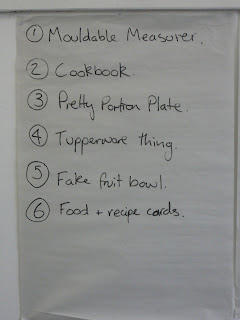
Only one of us managed to get a prototype completed in the week we had to prototype. Ryan finished his delightful and fun moldable measuring device. Unfortunately, I managed to explode that prototype before our morning meeting was over. It was at this point that we decided that physical prototypes of so many different items was a bit of an unrealistic goal given our financial and time constraints. So we set about trying to narrow down our prototypes to the ones we really wanted to pursue by listing the various pros and cons of each idea. Before we did this, Fraser (our module leader) dropped by to have a chat with us. While talking to him, the old idea of the
food education ingredient card deck resurfaced. He really liked the idea and encouraged us to pursue that as well. So it ended up on the list as well! So much for narrowing things down.
Fortunately, our Pro/Con exercise took care of that for us.
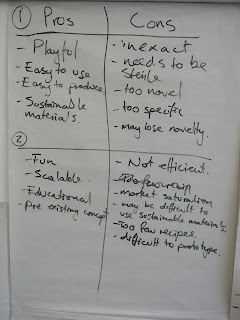

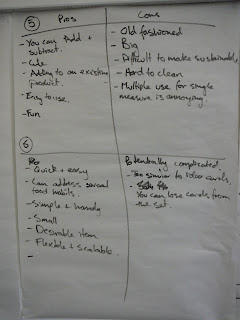
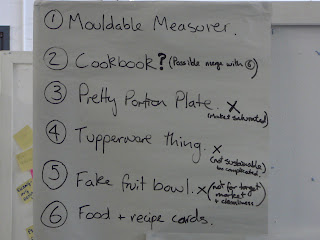
In the end, we decided that the fruit bowl was likely not going to be appropriate for our target audience of young people (after all, how many 20-somethings do you know who keep a bowl of fake fruit in their kitchen?). The pretty portion plate had a number of strikes against it--it doesn't address the problem of making too much food, just of not eating too much food. Additionally, there are a lot of portion control plates available on the internet; perhaps none as lovely as we intended, but if people aren't buying the ones available, it's unlikely that our product would be any different. The moldable measure is cool, and fun to play with, but we thought the novelty would wear off pretty quickly. A measuring device doesn't do any good if it's never used.
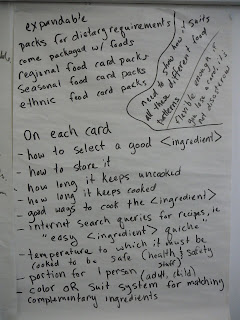
We concluded that we were most interested in pursuing the deck of ingredient cards in tandem with the recipe book--putting together a kitchen knowledge kit for young people. We haven't completely ruled out the other ideas--in fact, we're making little advertisements to show to people to get feedback on them--but we're also prototyping the ingredient card deck. Here's a picture of our brainstorm as to what should go on the cards!













.JPG)
